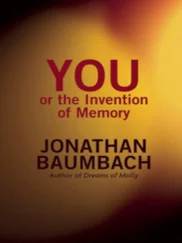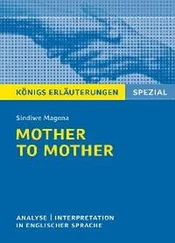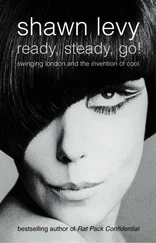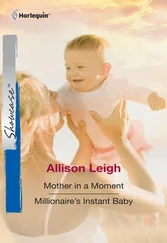“Thank you.”
“In short, Tessa, I want you . At ZimLabz.”
Tessa laughed. “I’ve already got my own company, remember?”
“Then let’s merge. Think of the possibilities if our product lines merged. Between TEAT and Seahorse, pregnancy, birth, and early postpartum would become extremely low impact for women. Think of the benefits for their careers, their stress levels. Their time .”
“I am thinking about those things,” she said quickly. “Basically all the time.”
“So? Then how does a merger strike you?”
“I’d want to keep my brand,” she said reflexively. “Seahorse is here to stay.”
“So keep your brand. ZimLabz will fold into Seahorse.”
“I’m flattered. But I’d need to think about it—a lot. And get a lot of questions answered.”
“Ask me anything.” Luke set his empty juice bottle on the floor and leaned back on his hay bale, as if settling in for a long conversation. “Right now.”
“For starters, I’d need to vet your technology. What’s the basis for it?”
“Gene editing, essentially. CRISPR technology. The newest application of classic Mendelian inheritance.”
Tessa nodded. “All the rage. But editing from what source material, exactly?”
Luke paused for a beat. Tessa thought she detected a slight change in his breathing, as if he were suddenly nervous. Understandable; they’d just met an hour ago, and he was essentially divulging his greatest trade secrets to her.
“Skin samples of natural AG mothers and babies,” he answered, swiping his hair off his forehead with his index and pinky fingers. “Mothers and babies. Donated by anonymous volunteers. TEAT technology involves base code drawn from a combination of dozens of those samples, which my team then analyzed and altered and replicated. We’re already at the animal trial phase. The goal is a human trial two years from now.”
“How does your team alter the base code?”
Luke shrugged. “I can’t pretend to understand the details. I haven’t won any Nobel Prizes, like some of my new colleagues. But in layman’s terms, they quality-control the source material by snipping away the risky stuff.”
“Eugenics,” said Tessa.
“In a way,” said Luke. “But the positive, market-based kind. The same kind that’s helping cure diabetes and cancer.”
“And what’s your stake in all this, Luke? You’re Reed Zimmerman’s son. I’m guessing you have a fair amount of… resources at your disposal. You probably could be doing anything you want. Traveling to space. Living on a private island. Why this?”
Luke flicked his eyes toward the ceiling and back to Tessa. “My father helped invent social media. Which I think is basically evil. In the end, LikeMe and all its garbage spawn just make people feel bad. It created a massive, ubiquitous system of artificial desire and reward. It made personal experience an object to be displayed and judged. It’s done nothing but wedge humans apart from one another.”
“I agree,” said Tessa.
“And, mark my words, it will die. LikeMe usership peaked in 2017 and is incrementally declining. Twitter’s in serious trouble. Even Snapchat has a million fewer users than it did two years ago.”
“I know. But what does this have to do with TEAT?”
He began tapping one foot on the concrete floor.
“Well, when my dad died, he managed to turn even death into a popularity contest. Do you remember ?” Luke’s voice grew fervid. “The VR service with people all over the world weeping? Holding up signs that said shit like The World Will Never Be the Same ?”
“I remember,” said Tessa.
“It made me want to do something that was the exact opposite of what my father did. Something tangible and physical and real . Some kind of breakthrough that trends and taste and pop culture and fucking likes couldn’t touch.”
“And so you just decided to reconfigure women’s reproductive systems?”
“No. It was more like the decision found me . I stumbled upon some information about AG, and suddenly the lights went on. I can’t explain it. But it felt like an epiphany.” His eyes searched for Tessa’s in the dim, aqueous light of the garage. “Like suddenly I had the key to unlocking a new kind of freedom for women.” He exhaled loudly, as if he’d worn himself out.
Tessa took a moment to absorb what he’d just told her. To let his passion and his anger settle. Clearly, he was full of both.
Then she asked, “Might you have anything other than beet juice to drink?”
Luke grinned. “I’ve got room-temperature La Croix. And a bunch of bourbon. Same artisanal shit they were serving at the roller-bot party.”
“I’ll take some of that,” said Tessa, rising from her hay bale. The straw had left crisscross patterns on her palms where she’d leaned them against it.
Then they talked and talked, the evening melting into night, the gap between their knees on opposite hay bales growing narrower. But. Tessa felt she’d encountered some alternate version of herself. In his presence, she felt open and unfettered, as if she could say anything. It was absurd; he was a baby. Yet their rapport had a chemical pull. At some point, she’d literally let her hair down, pulling it from the professional low ponytail she’d worn to the meeting so it fell around her face.
Perhaps— perhaps —they would end up working together.
She had a lot of thinking to do first.
When she finally left his garage, it was 4:00 a.m., the streets of the city gauzed with fog and weak streetlights, but Tessa was wide-awake, teeming with brightness. She waited until she got home to Atherton to call Peter in Kathmandu, who assumed she’d just woken up for the day, and she let him believe it.
2021
Tessa stood beside Kate in a procedure room of East Lobe, dressed in blue scrubs and a surgical mask, holding Kate’s hand. Kate lay on the exam table, her body bisected just above her belly by a white sheet that extended from a rod over the table. On a mount at her eye level was a monitor on which she and Tessa would be able to watch the transfer. The room was cold and Kate was shivering lightly, despite the fleece blanket covering her from the waist up. A Chopin sonata drifted through the spotless, bright room done in white soapstone and stainless steel.
“What’s taking them so long?” asked Kate. Her blond hair was pulled back and tucked under a hairnet and her face was free of makeup, making her look younger and more vulnerable than usual.
“They’re not taking so long,” said Tessa. “It just seems that way.”
Dr. Milford and Dr. Gupta were scheduled to arrive in Kate’s room shortly, after they completed LaTonya’s and Gwen’s transfers. Kate had requested to go last. Targeted Embryonic Acceleration Technology required neither surgery nor anesthesia, nothing more than a speculum and catheter, but still, Kate was nervous. Tessa could feel it in the dampness of the young woman’s slim fingers, in the fierceness with which she clutched Tessa’s hand.
Kate palmed the monitor beside her with her free hand. “Am I sure I want to watch this?”
“Yes,” said Tessa. “It will demystify the experience. I’ll be watching it right alongside you.”
Kate smiled. “Fear is proportionate to its vagueness, right?” It was a line from Pushing Through .
“Exactly,” said Tessa.
“I’m not afraid of the transfer,” said Kate. “I’m just afraid it won’t work. I wish they’d implant more than one embryo. The odds seem so low. Statistically, only one in—”
“Kate, no stats. Every detail of this trial is by design. We’re conserving embryo supply on purpose. Not because we expect TEAT to not work, but to guarantee that it will . Even if we have to go through a second round of transplants. Which I’m confident we won’t.”
Читать дальше












